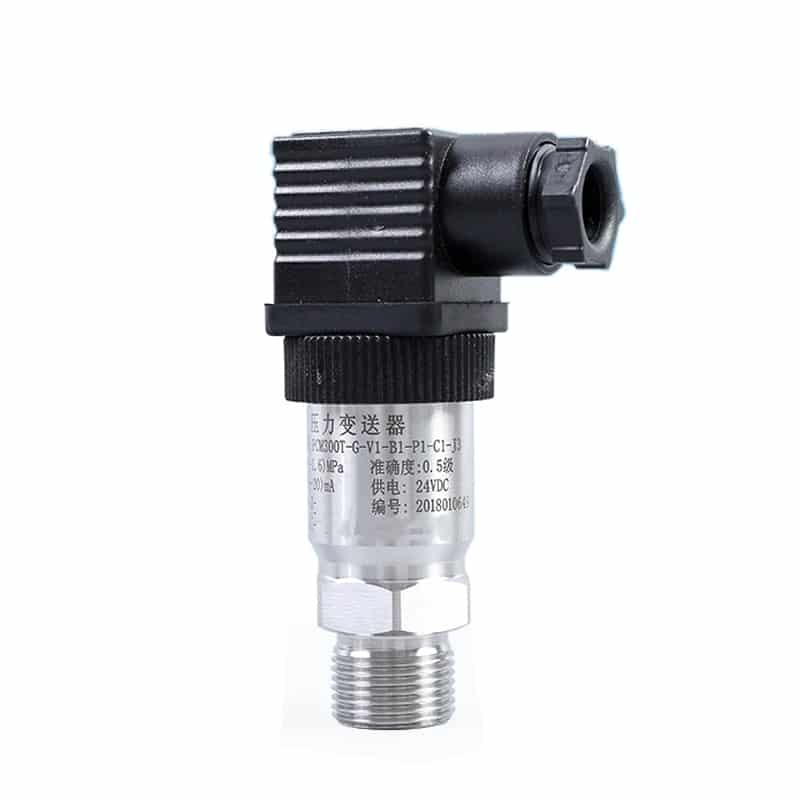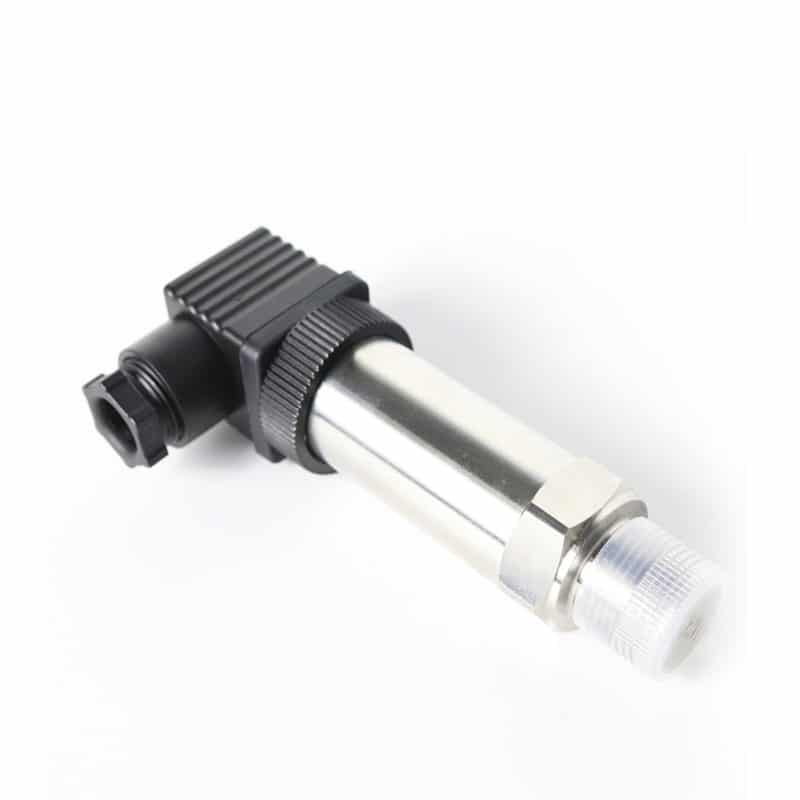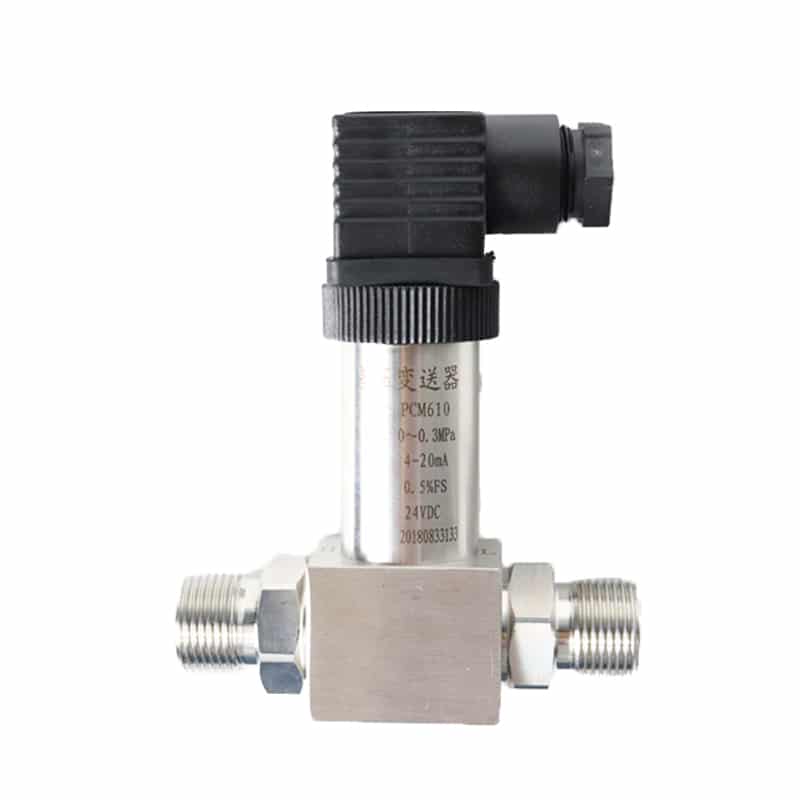What is pressure transducer?
A pressure transducer, often called a pressure transmitter, is a sensor that converts pressure into an analog electrical signal. Although there are various types of pressure transducers, one of the most common is the strain-gauge type.
The conversion of pressure to an electrical signal is achieved by the physical deformation of a strain gauge, which is bonded to the diaphragm of the pressure transducer and connected to a Wheatstone bridge structure. The pressure applied to the pressure transducer will create a deflection of the diaphragm, which will introduce strain into the gauge. The strain will produce a change in resistance proportional to the pressure. Typically used in many control and monitoring applications such as flow, level, and pump systems.
Pressure is defined as the amount of force (exerted by a liquid or gas) applied per unit “area” (P=F/A) and is commonly measured in pascals (Pa), bars (bar), N /mm2 or psi (pounds per square inch). Pressure Transducers typically use piezoresistive technology because the piezoresistive element changes its resistance proportional to the strain (pressure) experienced.
Types of pressure sensors
Depending on their design, there are different types of pressure sensors. These sensors can come in a variety of shapes and sizes, but the internal technology may also differ.
There are 4 main types of pressure sensors based on this.
- Strain gauge pressure transducers
- Capacitive pressure transducers
- Potential pressure transducers
- Resonant wire pressure transducers
Electrical output of pressure transducers
Pressure transducers typically have three types of electrical outputs; millivolts, amplified voltage and 4-20 mA. This article explains how to connect the different types of pressure sensors according to their outputs.
Afterwards, the electrical output needs to be converted to engineering units, such as PSI or bar.
The following is a summary of the outputs and the best time to use them.
Millivolt output pressure transducers
A millivolt output sensor is usually the most economical pressure sensor. The nominal output of a millivolt sensor is approximately 30 mV. The actual output is proportional to the input power or excitation of the pressure sensor.
If the excitation fluctuates, the output will also change. Because of this dependence on the excitation level, it is recommended that a regulated power supply be used with the millivolt sensor. Because the output signal is so low, the sensor should not be placed in an electrically noisy environment.
The distance between the sensor and the readout instrument should also be kept relatively short.
Voltage output pressure transducers
Voltage output sensors include integrated signal conditioning that provides a much higher output than millivolt sensors. The output is typically 0-5 Vdc or 0-10 Vdc.
Although model specific, the output of the transducer is usually not a direct function of the excitation. This means that unregulated power supplies are usually sufficient, as long as they are within the specified power range.
Because they have a higher level output, these transducers are not as susceptible to electrical noise as millivolt transducers and can therefore be used in more industrial environments.
4-20 mA output pressure transducers
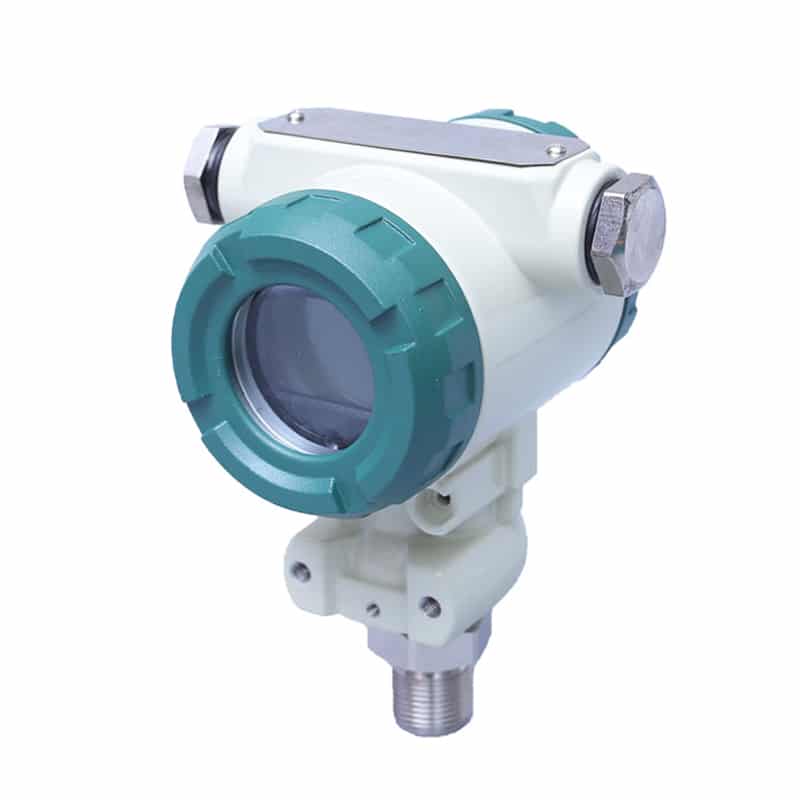
These types of sensors are also known as pressure transmitters. Because the 4-20 mA signal is least affected by electrical noise and signal line resistance, these sensors are best used when the signal must be transmitted over long distances.
It is not uncommon to use these sensors in applications where the leads must be 1000 feet or longer.
Selecting the right pressure transducer
Different applications have a pressure transducer or pressure transmitter that is best suited for the corresponding type of application. Each pressure sensor has different aspects that affect how it works and the application for which the pressure sensor is best suited. When selecting a pressure transducer, keep the following 6 criteria in mind.
Applications and measurement types
Common types of pressure measurements include: absolute, gauge, differential, vacuum, bi-directional and sealed gauge. The most suitable measurement type needs to be determined first.
Pressure range
Probably one of the most important decisions when selecting a pressure sensor is the range. Two conflicting considerations must be kept in mind.
Accuracy of the instrument and overpressure protection. From an accuracy standpoint, the range of the transmitter should be low (normal operating pressure is around the middle of the range) in order to minimize errors (usually as a percentage of full range).
On the other hand, the consequences of overpressure damage due to operational errors, faulty design (water hammer) or failure to isolate the instrument during pressure testing and start-up must always be considered. It is therefore important to specify not only the required range, but also the required amount of overpressure protection.
Process media
The process fluid to be measured should also guide your decision. Often referred to as “wetted parts”, these materials should be selected for their compatibility with the fluid to be measured. For environments where the air is clean and dry, almost any material can be used. However, for conditions where seawater is used, the use of high nickel content alloys should be considered.
Temperature range and installation environment
Extreme temperatures or vibration can limit the transmitter’s ability to operate properly. For extreme temperatures, thin-film technology is superior. Extreme temperatures can also produce errors in the output of the sensor. Errors are typically expressed as a percentage of full scale (%FS/°C) over 1°C.
The sensor housing should be selected to meet the electrical area classification and the corrosion requirements of the particular installation.
Accuracy
Pressure gauges are available in many different accuracies. Common pressure transducers range in accuracy from 0.5% to 0.05% of full scale output. Higher accuracy is required when very low pressures need to be read for demanding applications.
Outputs
Pressure transducers are available with several types of outputs. These include: ratiometric, mV/V output, amplified voltage output, mA output, and digital outputs such as USBH. More detailed information on each output type can be found here. In general, it is important to consider the constraints and benefits of each output to determine the best type of output for your application.
Why is it important to calibrate pressure transducers?
Pressure transducer calibration is an adjustment or set of corrections performed on a transducer or instrument (amplifier) to ensure that the transducer operates as accurately or error-free as possible.
Every sensor is susceptible to measurement errors. These structural uncertainties are simple algebraic differences between the value indicated by the sensor output and the actual value of the measured variable or a known reference pressure. Measurement errors can be caused by a variety of factors.
Zero offset (or pressure sensor zero balance): an offset means that the sensor output at zero pressure (true zero) is higher or lower than the ideal output. In addition, zero stability is related to the degree to which the sensor maintains its zero balance with all environmental conditions and other variables held constant.
Linearity (or nonlinearity): Few sensors have a completely linear characteristic curve, meaning that the output sensitivity (slope) varies at different rates over the entire measurement range. Some sensors are sufficiently linear over the desired range and do not deviate from a straight line (in theory), but others require more complex calculations to linearize the output. Thus, pressure sensor nonlinearity is the maximum deviation of the actual calibration curve from an ideal straight line plotted between no pressure and rated pressure output, expressed as a percentage of rated output.
Hysteresis: The maximum difference between sensor output readings at the same applied pressure; one reading is obtained by increasing pressure from zero, the other by decreasing pressure from the rated output. It is usually measured at half of the rated output and expressed as a percentage of the rated output. Measurements should be made as soon as possible to minimize creep.
Repeatability (or non-repeatability): The maximum difference between repeated input sensor output readings at the same pressure and environmental conditions. It translates into the ability of the sensor to maintain a consistent output when the same pressure is repeatedly applied.
Temperature Shift Span and Zero: The change in output and zero balance due to changes in sensor temperature, respectively.
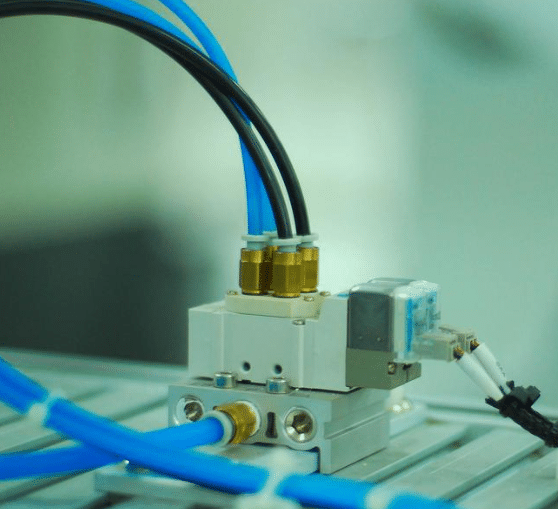
Because strain gauge pressure transducers are subject to constant use, aging, output drift, overload and improper operation, Apure recommends annual recalibration. Frequent recalibration helps to confirm that the load cell maintains its accuracy over time and provides a load cell calibration certificate to show that the cell is still within specification.
However, pressure transducers may require more frequent calibration when the transducer is used in critical applications and harsh environments.
How much does a pressure transducer cost?
There are many factors that can affect the price of a pressure transducer. The biggest difference is whether you can use a standard off-the-shelf pressure sensor or whether you need a custom pressure sensor.
With off-the-shelf pressure transducers, the price of the pressure transducer will be most influenced by the level of accuracy required for your application. The more accurate it is, the more expensive the pressure sensor usually is.
Summary
A pressure sensor is a device that converts pressure into an electrical signal and is widely used for flow, level and pump system monitoring. The main types include strain gauge, capacitive, piezoelectric and resonant, and output signals can be millivolts, voltage or 4-20mA current. Selection of a sensor requires consideration of the type of measurement, pressure range, media suitability, environmental conditions and accuracy requirements, and periodic calibration is required to ensure accuracy.
For more information on pressure sensor pricing and configurations, contact Apure. Apure also offers water quality analyzers, flow and level measurement instruments, and temperature measurement instruments.
Selecting the right pressure transducer for your application
Extended reading:
Solution of water pollution
Relation between flow and pressure
Types of IoT sensors
Water level sensor types and works

